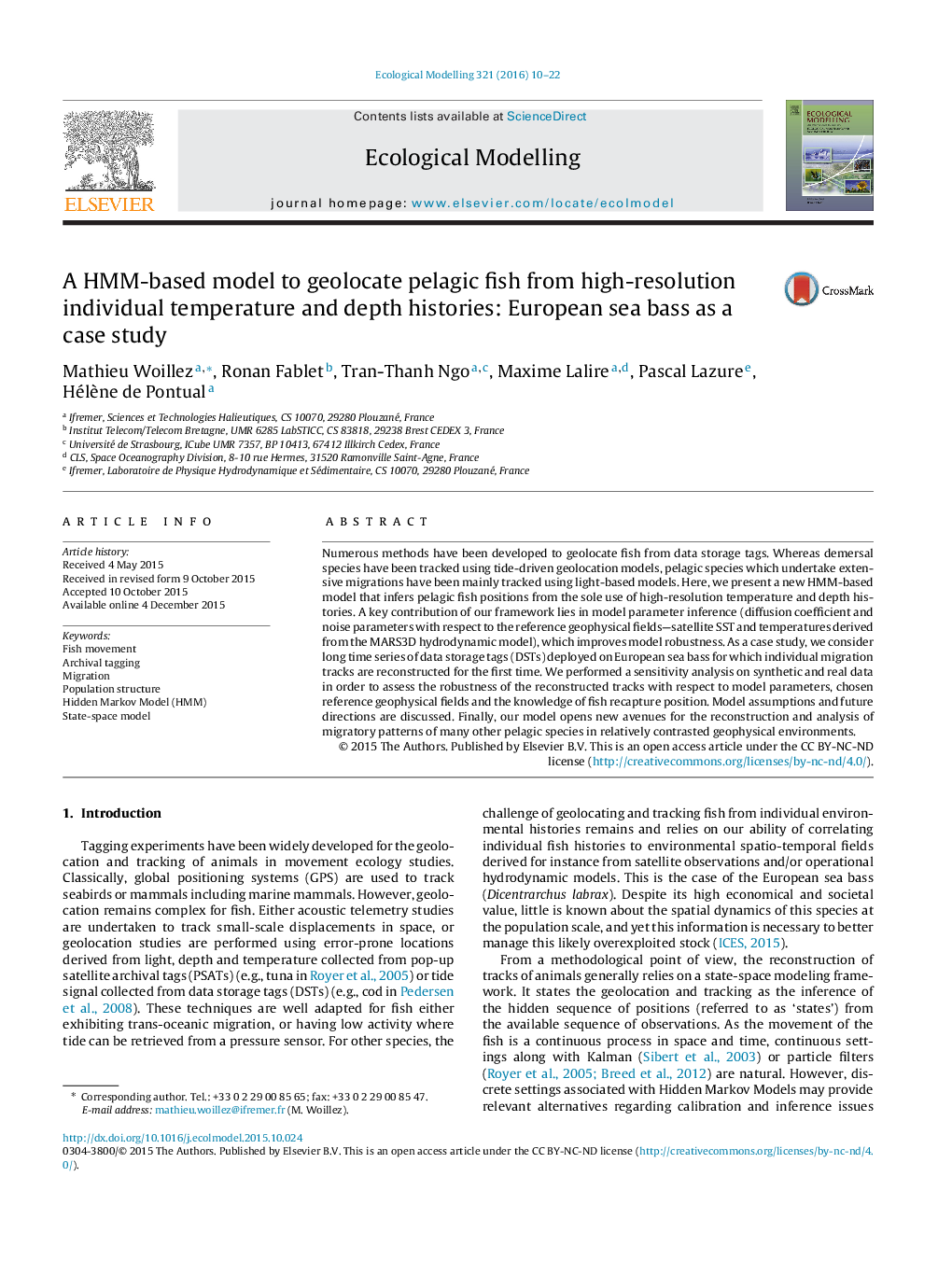| Article ID | Journal | Published Year | Pages | File Type |
|---|---|---|---|---|
| 6296197 | Ecological Modelling | 2016 | 13 Pages |
Abstract
Numerous methods have been developed to geolocate fish from data storage tags. Whereas demersal species have been tracked using tide-driven geolocation models, pelagic species which undertake extensive migrations have been mainly tracked using light-based models. Here, we present a new HMM-based model that infers pelagic fish positions from the sole use of high-resolution temperature and depth histories. A key contribution of our framework lies in model parameter inference (diffusion coefficient and noise parameters with respect to the reference geophysical fields-satellite SST and temperatures derived from the MARS3D hydrodynamic model), which improves model robustness. As a case study, we consider long time series of data storage tags (DSTs) deployed on European sea bass for which individual migration tracks are reconstructed for the first time. We performed a sensitivity analysis on synthetic and real data in order to assess the robustness of the reconstructed tracks with respect to model parameters, chosen reference geophysical fields and the knowledge of fish recapture position. Model assumptions and future directions are discussed. Finally, our model opens new avenues for the reconstruction and analysis of migratory patterns of many other pelagic species in relatively contrasted geophysical environments.
Related Topics
Life Sciences
Agricultural and Biological Sciences
Ecology, Evolution, Behavior and Systematics
Authors
Mathieu Woillez, Ronan Fablet, Tran-Thanh Ngo, Maxime Lalire, Pascal Lazure, Hélène de Pontual,
